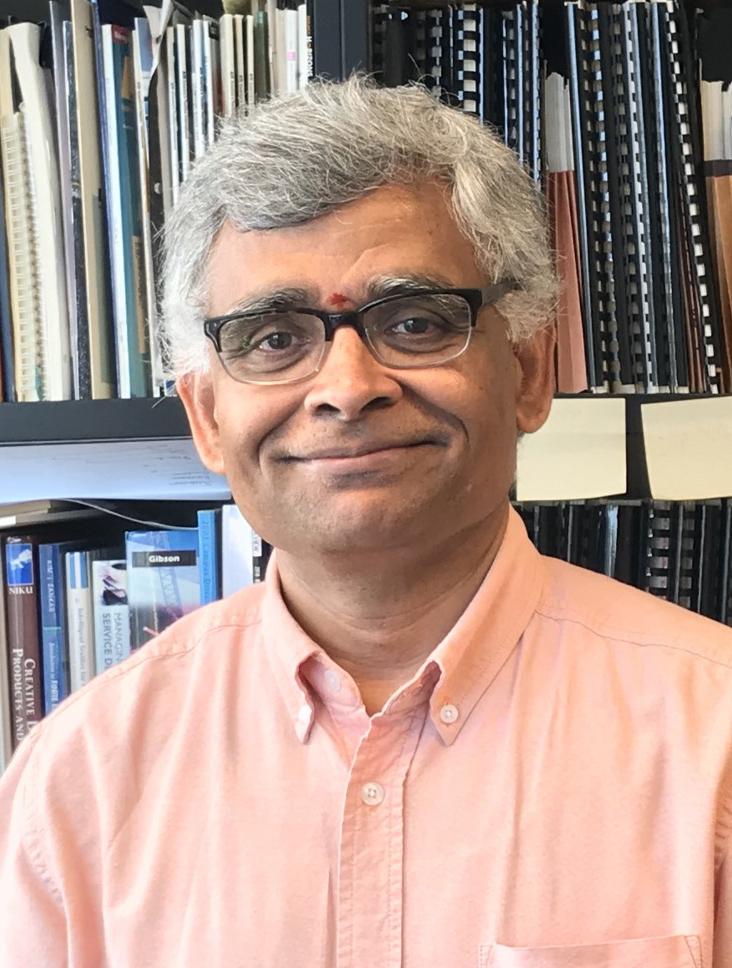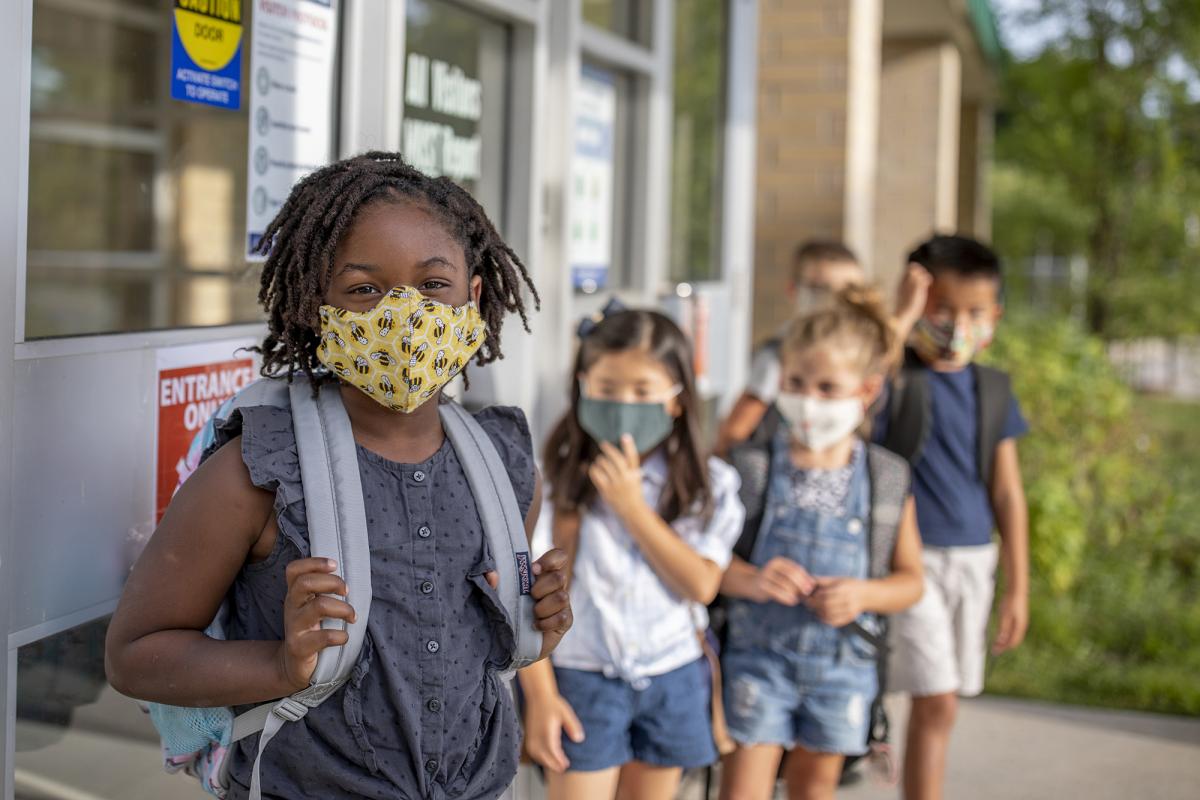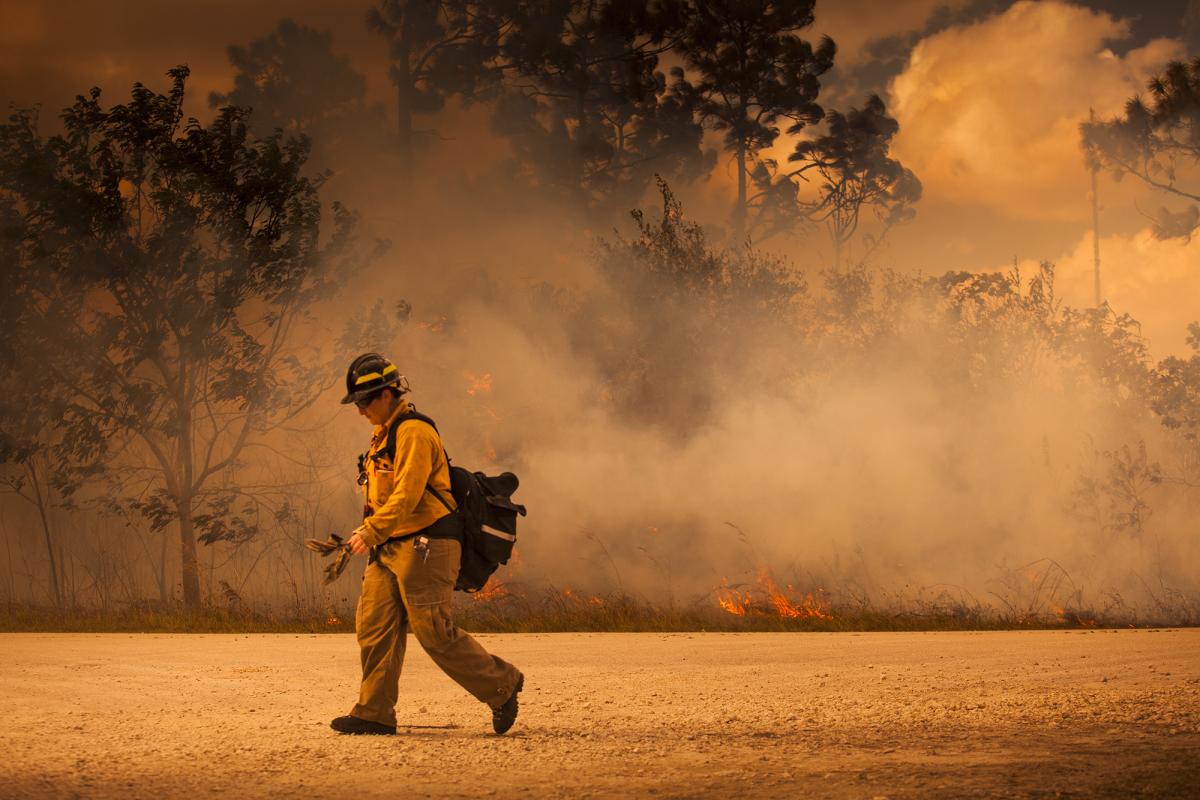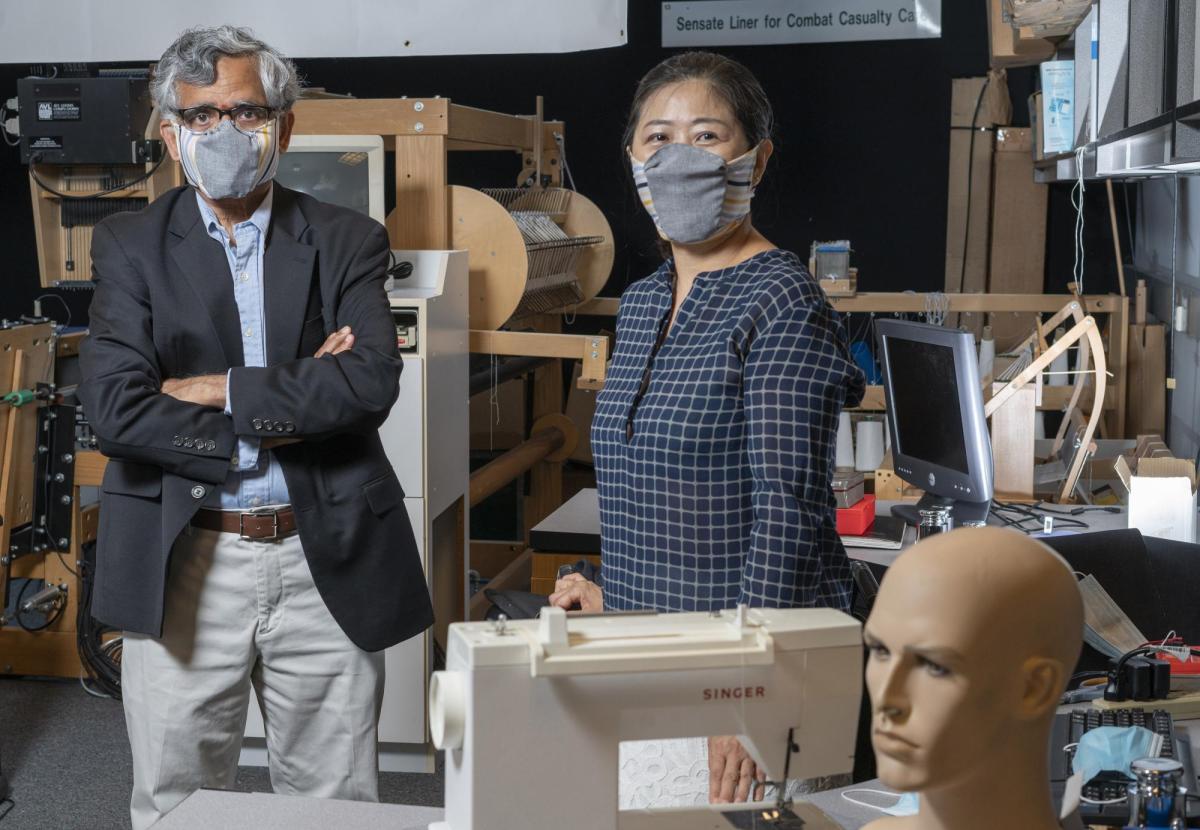MSE professor co-authors study that addresses gaps in public health related to pandemic, wildfires, workers, and children
(text and background only visible when logged in)
Georgia Tech Professor Sundaresan Jayaraman is among a small group of national experts that has authored a new National Academies of Sciences, Engineering, and Medicine (NASEM) report that outlines a road map to protect the respiratory health of all Americans. The first-of-its-kind report seeks to ensure that everyone, including children, has access to appropriate respiratory protective devices and guidance on their effective use.
Jayaraman, professor in the School of Materials Science and Engineering, is one of 20 experts on the national committee. They recommend that every worker, including essential and gig economy workers, should be covered by Occupational Safety and Health Administration (OSHA) or equivalent respiratory protection requirements when exposed to inhalation hazards in the workplace. Millions currently aren’t covered by an RPP (respiratory protection program).
At the same time, there currently isn’t a federal entity that approves respiratory protection devices intended for the general public. The committee recommends that the U.S. Department of Health and Human Services (HHS) designates a laboratory to oversee standards development, assessment, and approval of such devices.
Jayaraman is a national leader in studying and defining the roles of engineering design, manufacturing, and materials technologies in public policy. The founding director of Georgia Tech’s Kolon Center for Lifestyle Innovation served on the Committee on Respiratory Protection for the Public and Workers without Respiratory Protection Programs at their Workplaces, a group sponsored by the CDC Foundation, U.S. Department of State, U.S. Environmental Protection Agency, and the National Institute for Occupational Safety and Health.
He expands on the report, which is titled “Frameworks for Protecting Workers and the Public from Inhalation Hazards.”

Sundaresan Jayaraman
What do you think are the most important recommendations?
The needs of many workers and the public are not being met. Significant disparities exist.
For example, not only isn’t there an authority responsible for oversight of respiratory protection for the public, but RPPs in place for workers with OSHA coverage are not suitable for implementation in the general population. As we have all seen during the pandemic, messaging and guidance are unclear and sometimes conflicting. This leads to confusion. Even terminology is unclear to the public – what is a mask? A respirator? A face covering? Finding answers to simple, yet important, questions has not been easy. Which device to use, and is it safe? Where can it be bought and how can it be used effectively?
As we have all seen during the pandemic, messaging and guidance are unclear and sometimes conflicting. This leads to confusion. Even terminology is unclear to the public – what is a mask? A respirator? A face covering?
These are among the reasons we recommend a “coordinating entity” within HHS to oversee the efforts of multiple stakeholders with responsibilities and authorities related to respiratory protection for the public. This would ensure availability and access to respiratory protective devices, as well as the development of clear and consistent guidance and training for those charged with educating the public.

In the meantime, many of America’s workers, such as wildland firefighters and gig workers, fall outside of OSHA’s RPP. Protection afforded by a respirator used outside of an RPP may be diminished due to improper fit or use. Our recommendations to expand OSHA coverage are aimed at filling gaps in these protections, providing more training for workers, and expanding research in workplace protection against inhalation hazards.
Thus, for the first time, we are laying out a road map to protect the respiratory health of everyone in our country to ensure that all people have access to the right devices at the right time.
Do you think the nation is prepared to make the changes necessary to follow the recommendations?
We are facing unprecedented threats from inhalation hazards, such as wildfire smoke and infectious agents like SARS-CoV-2, the cause of the Covid-19 pandemic. This is a pivotal point in public health.
The proposed systems-based road map is forward-looking and provides a solid foundation for policy making that should lead to implementation. There is no better time for moving forward. The time for protecting the nation’s respiratory health is now!
Was the Covid-19 pandemic the primary reason the committee was formed?
The origins and impetus for this study predate the pandemic, which happened to reinforce the importance and criticality of respiratory protection for the population at-large.
Wildfire smoke in the west has been a major inhalation hazard. Mold growth indoors after flooding from storms poses another inhalation hazard. The respiratory health of families of our diplomats stationed abroad in cities with high degrees of air pollution is affected.
Today’s workforce includes independent contractors, self-employed workers, and gig workers who are not considered employees of an employer. This is why they lack the respiratory protection from inhalation hazards that come from OSHA-mandated programs.
Past National Academies reports have focused on respiratory protection needs of workers exposed to inhalation hazards. Our report builds from those efforts while being the first focused specifically on the needs of the public.

Wildfire firefighters are among those workers not covered by OSHA's RPP.
What was your role on the committee and how does your expertise play into your contributions?
The committee members chosen to serve brought a wide variety of disciplines and expertise to address this critical topic. The unifying theme of my research at Georgia Tech has been convergence: the seamless integration of materials, information, and technology to enhance quality of life. Consequently, the work in my lab includes systems modeling, smart textiles, and design and development of respiratory protective devices, among others.
(text and background only visible when logged in)

Jayaraman and principal research scientist Sungmee Park designed a reusable and more effective face mask during the Covid-19 pandemic.
(text and background only visible when logged in)
This is the ninth NASEM committee on which I have had the privilege of serving. The first one was in 2006 when the threat of bird flu led to the study titled “Reusability of Facemasks during an Influenza Pandemic.” I never imagined that the threat would become a reality with Covid-19.
The opportunity to interact and critically engage with the world’s leading experts on a host of interdisciplinary topics related to the study is a great learning experience. It has also given me the opportunity to bring the results of the research from my lab to inform the discussions during the compiling of the report. I firmly believe that research must blend conceptual advancements with practical implementation of these concepts for solving real-world problems, including shaping public policy. These studies have given me that fulfilling opportunity to contribute to society.